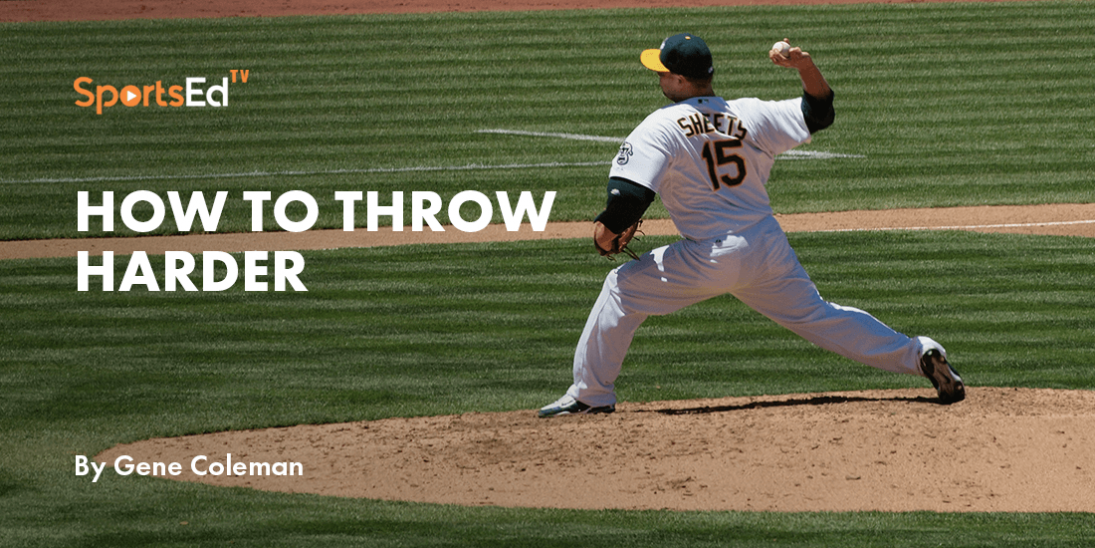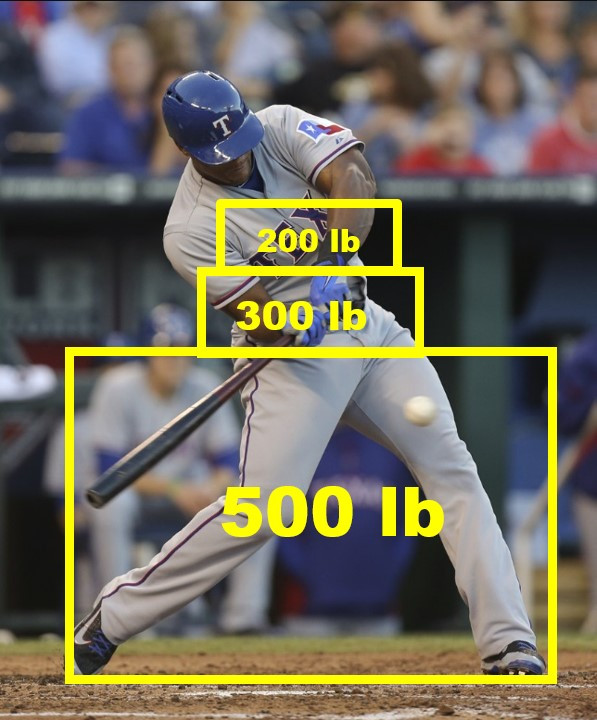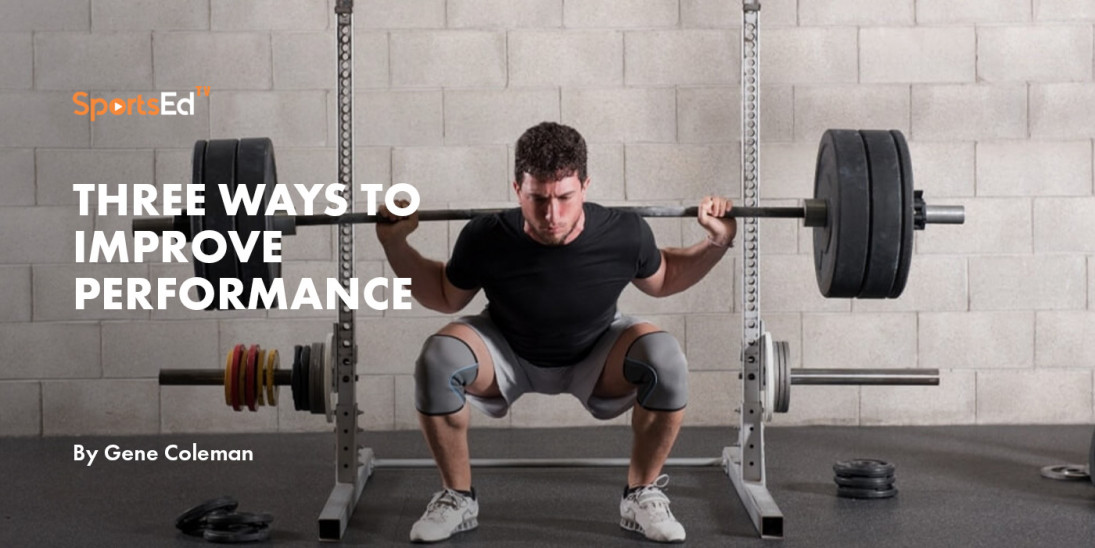Baseball, Strength And Conditioning
Welcome and thanks for visiting...

How To Throw Harder

The human body is often considered to be a three-link chain:
- Lower Body
- Core
- Upper body
In baseball, softball, and tennis, force is initiated in the hips and legs and then transferred through the core to the shoulders, arms, and hands, where it is applied to the bat/racquet or ball. We know that a chain is only as strong as its weakest link. In the human body, the weakest link is often the core.

Assume, for example, that it takes 1000 pounds of force to throw a baseball 90+ MPH or hit it 400 feet. Since the force potential for a given muscle or group of muscles is related to muscle mass, the segments with the greatest mass will have more force potential than those with less mass. The lower body has the greatest muscle mass. Assume that it has a force potential of 500 pounds. The core, having less muscle mass than the hips and legs but more than the shoulders, arms, and hands, can be assumed to have a force potential of 300 pounds. The upper body has the least amount of muscle mass and, therefore, can be assumed to have a force potential of 200 pounds. In accordance with the principle of summation of forces, if we add the force potential of the lower body (500 pounds) to that of the core (300 pounds) and upper body (200 pounds), the total force potential will be 1000 pounds1.
Now, assume that the core has only 200 pounds of force and that it is capable of transferring only 100% of the force generated by the lower body (400 pounds) to the upper body for application to the bat or ball. If this were the case, the total force potential would be 900 pounds: lower body (500 pounds) + core (200 pounds) + upper body (200 pounds), and the player in this example would not be able to throw 90+ MPH or hit a ball 400-feet. Players who fit this profile often try to compensate for a lack of force potential by attempting to “muscle up” and increase the risk of injury to the arm, shoulder, and core musculature.
As strength coaches, we often encounter players who believe that increasing lower body strength will enable them to throw harder and hit farther. This is partially true, but there are limitations as to how effective this approach is. In the previous example, we assumed that the core was able to transfer 100% of the force generated by the lower body. Exercise science, however, tells us that the mechanical efficiency of the human body is not 100% and that we can expect to transfer only 70-80% of the total force generated2.
Now, take a closer look at the individual who wants to throw harder and hit farther by increasing leg strength. If he/she increases leg strength by 20% in the off-season to 600 pounds but does not increase core strength, he/she still will not be able to achieve a total force potential of 1000 pounds. Because he/she can transfer a maximum of 80% of lower body force, the total force potential will be 880 pounds; lower body (480 pounds = 80% of 600 pounds) + core (200 pounds) + upper body (200 pounds).
The key to increasing total force potential in order to throw harder and hit farther is to make significant improvements in all segments of the chain: hips and legs, core and shoulders, arms and hands. Focusing on only one segment of the chain will not produce optimal results. Optimal results occur when you improve all segments of the chain.
References
- Hall, S. J. Basic Biomechanics, 6th McGraw-Hill, New York, NY, 2012.
- McArdle, W. D., et. al. Exercise Physiology Energy, Nutrition and Human Performance. 3rd Lea &; Febiger, Philadelphia, PA, 1991.








